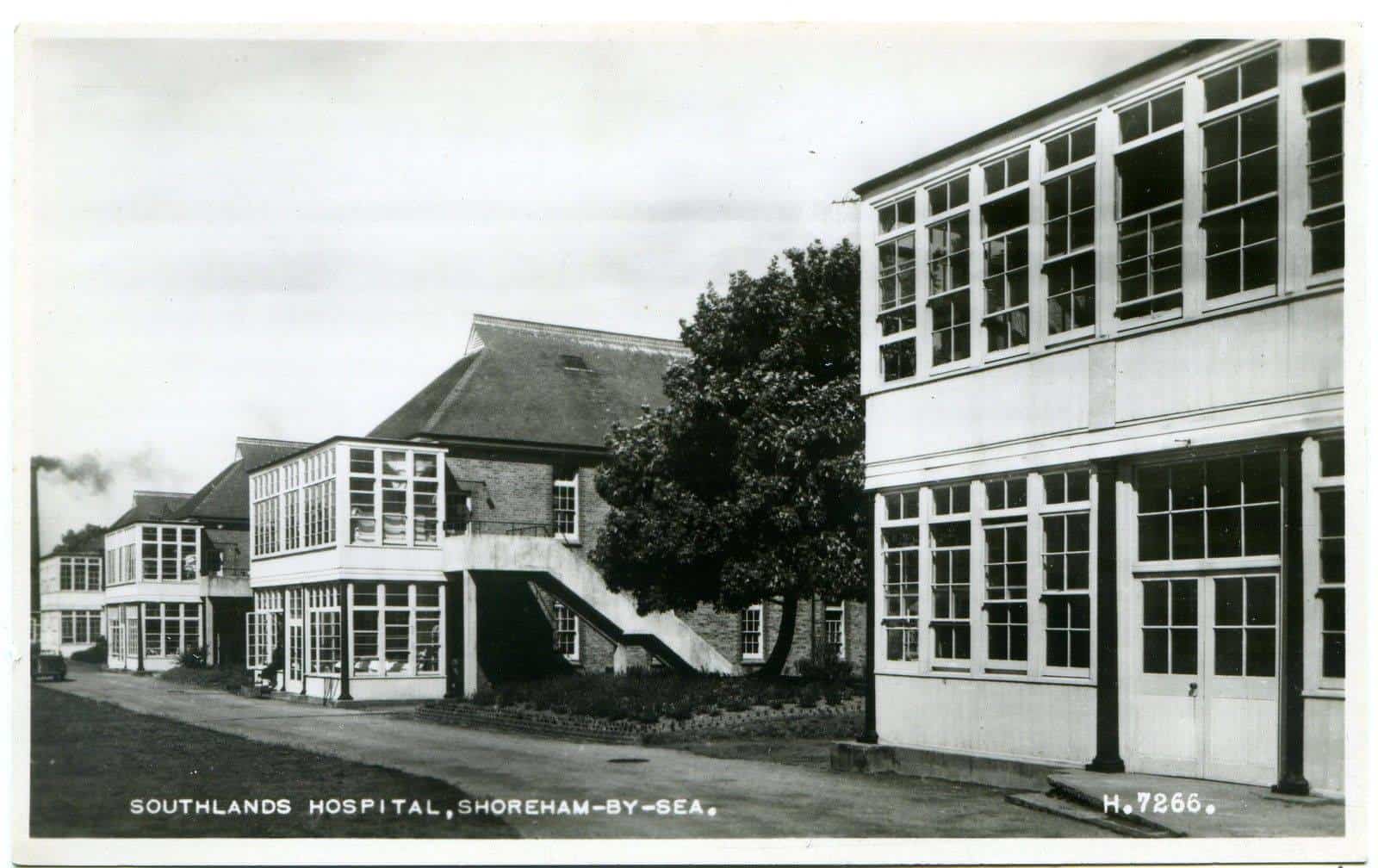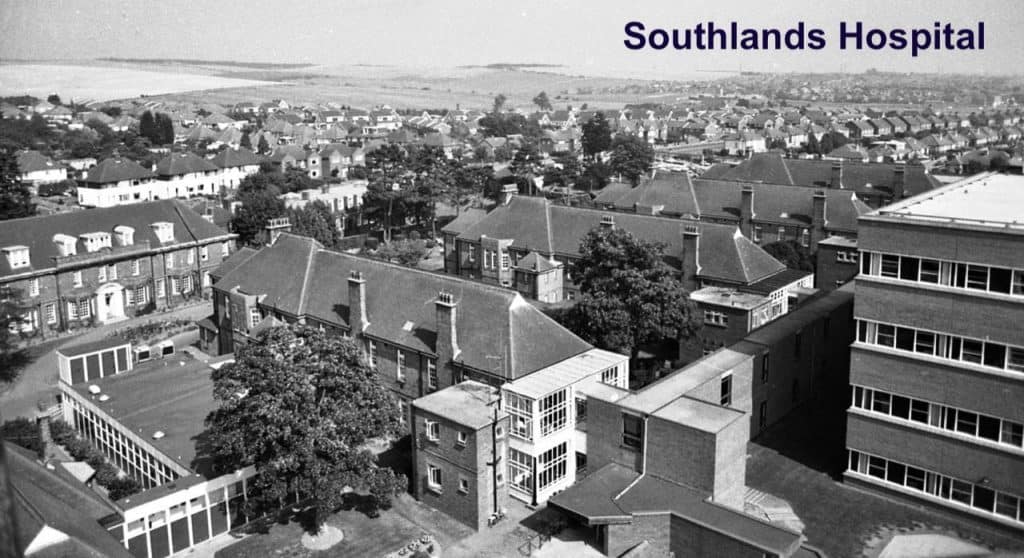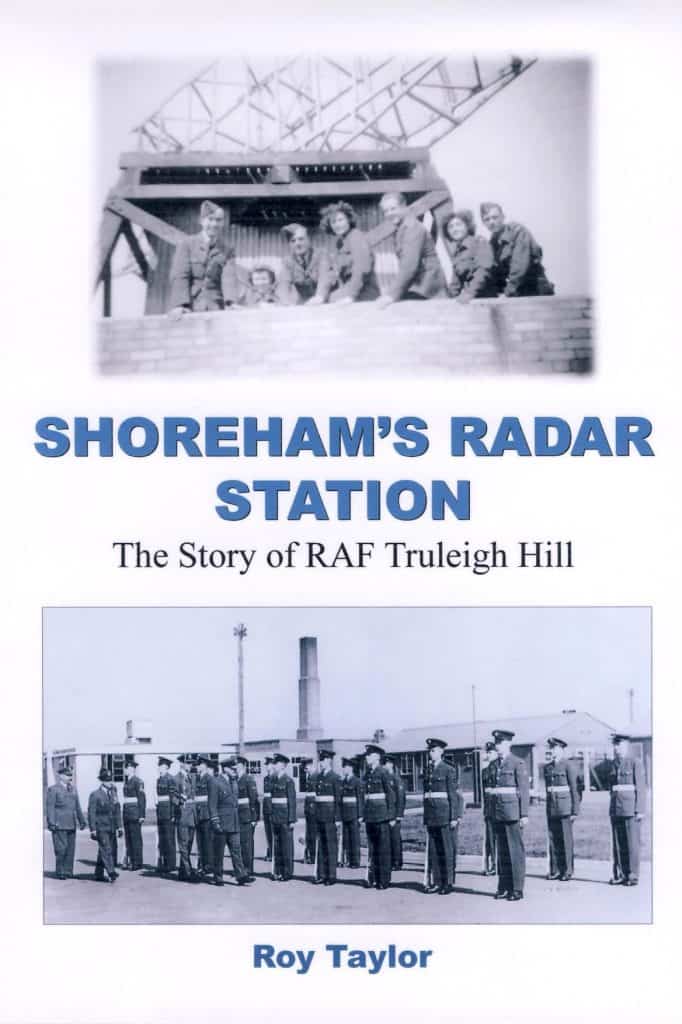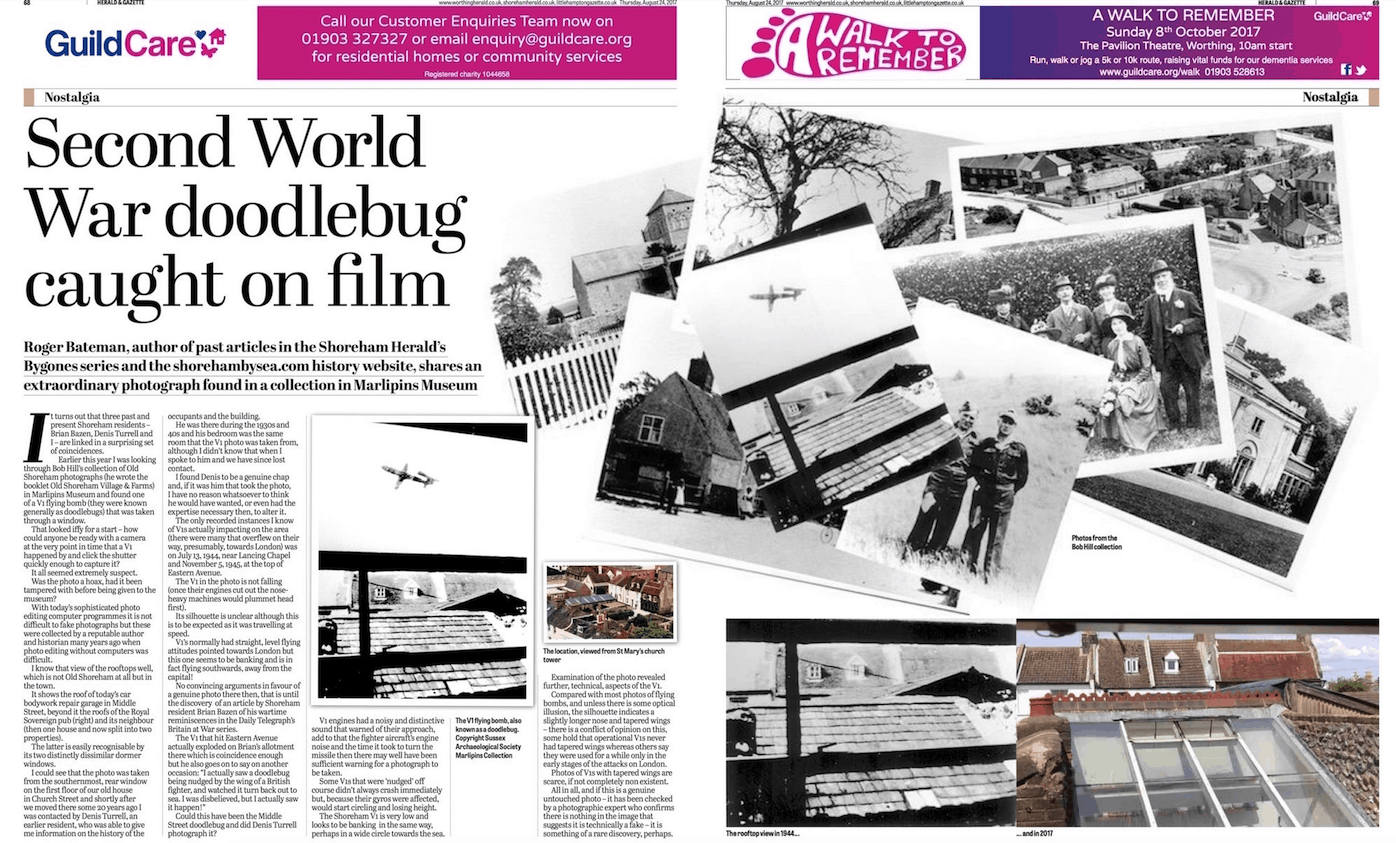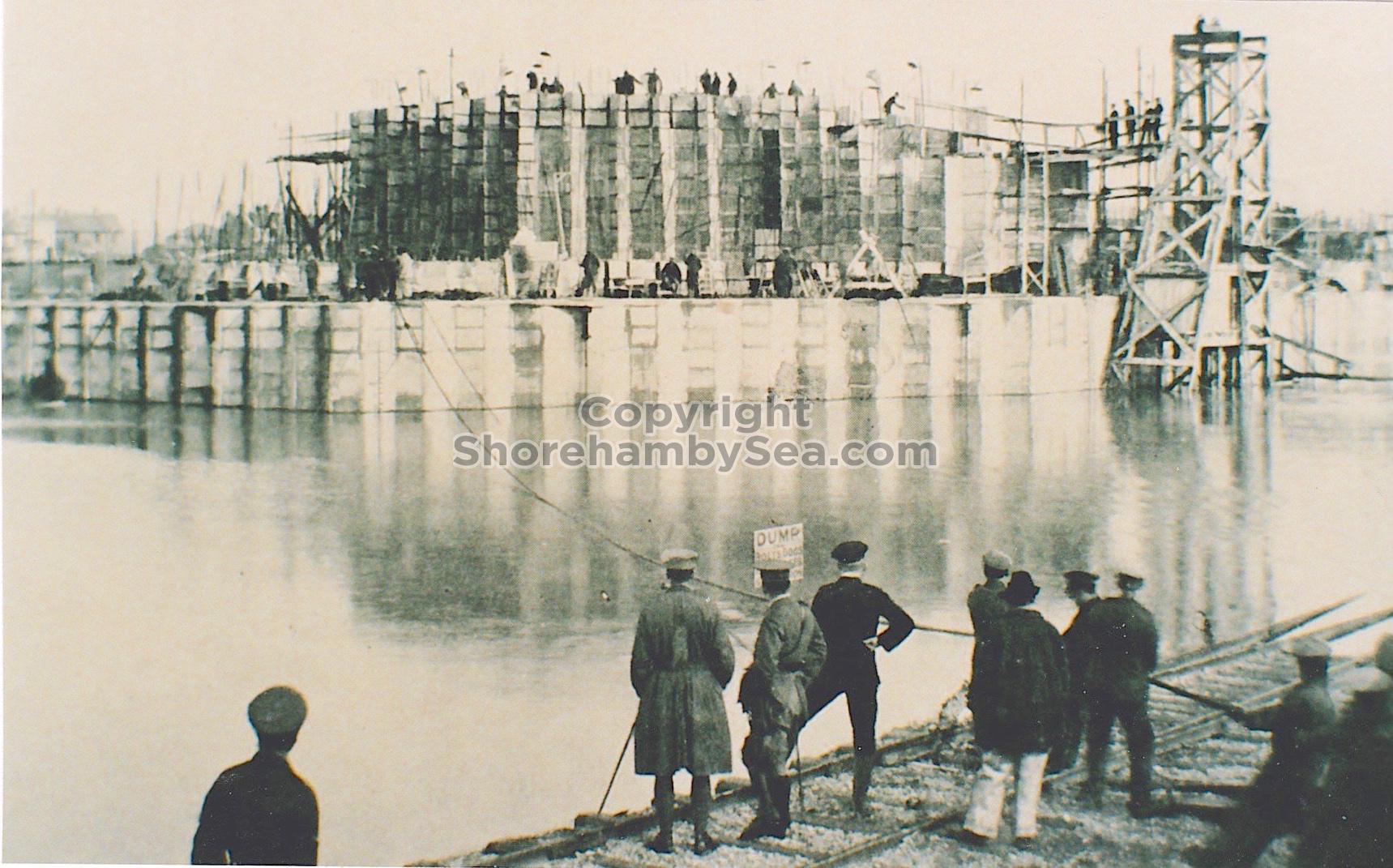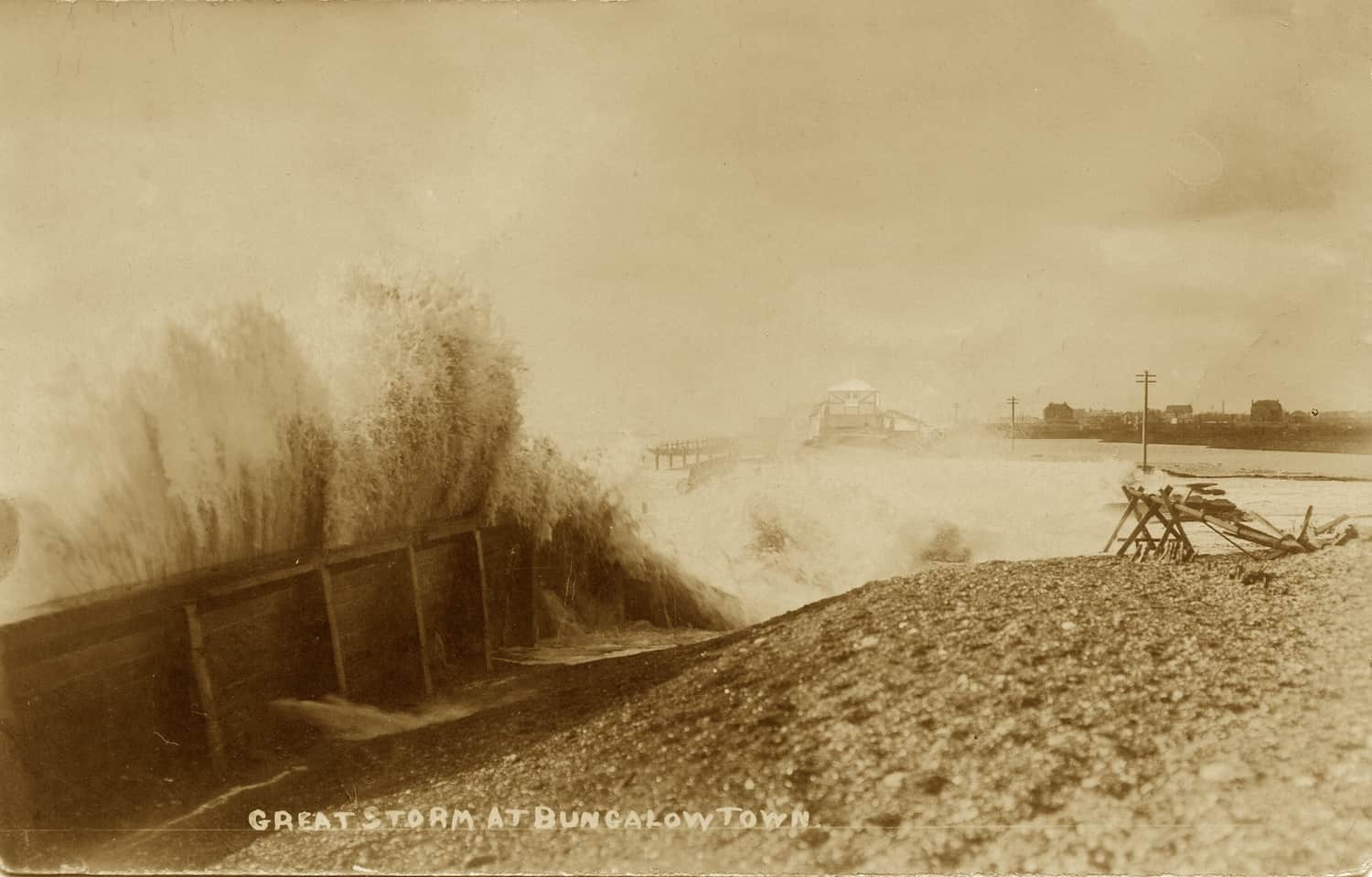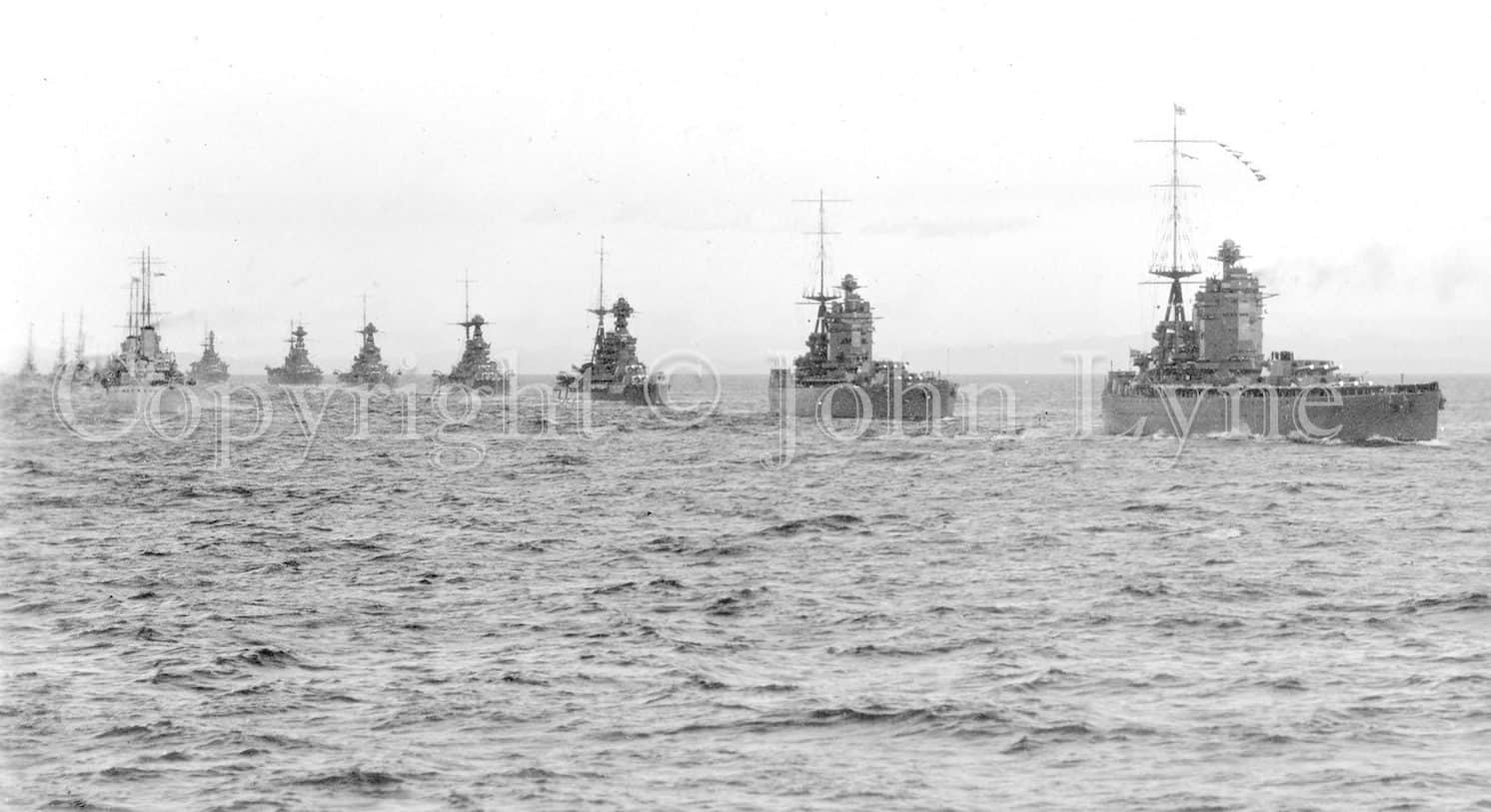Published in 1921 this is a copy of the definitive history of Shoreham-by-Sea written by local historian Henry Cheal, Hon. Curator and Librarian to the Sussex Archaeological Society. This PDF version is as provided by shoreham.adur.org.uk.
Where is Shoreham’s Pickett-Hamilton?
There is a curiosity hidden deep in the plans and maps of Shoreham Airport… the previous existence of three WWII Pickett-Hamilton Defensive Forts. Are they still hidden under the grass and tarmac? Are they lost?
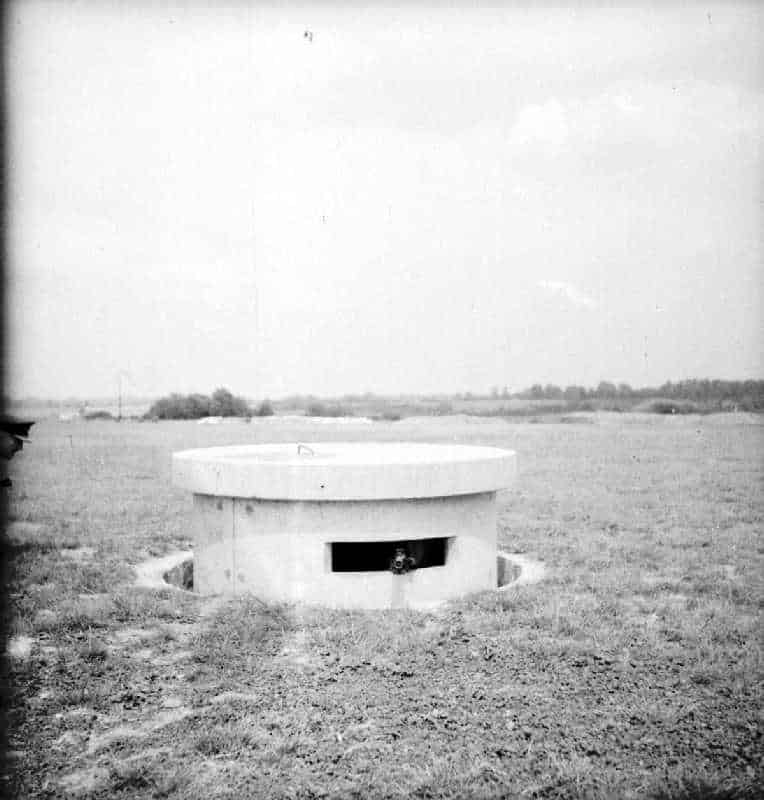
Ropetackle – the last 300 years
– a collection of images from the galleries and collections of shorehambysea.com illustrating the changes to the area since the 18th century.

What a wonderfully eccentric place it was! Besides a fascinating ropemaking and shipbuilding past there were, in Victorian times, ancient buildings still standing, quaint cottages, wharf houses, a gas works and, spookily, a mortuary alongside an incinerator! In the Little High Street there were peculiarly shaped houses and strange, shop-like windows.
It was never a fashionable area, being part industrial and part residential where the poorer, labouring families largely dwelt. In 1817 William Butler’s poor grammar described it as being “the lower ‘hend’ of town” and goes on to mention a ‘pour new’ shop where he had ‘connections’ with Sarah Fillaps. Something of a mystery and perhaps a pawn shop (a corruption of the French ‘for us’) or as William’s escapades suggest one of the numerous brothels in Shoreham port then?
During the early part of the 19th century Ropetackle included wharf houses, sheds, a brickyard, coal yard, a bonding pond, Thomas Clayton’s deal yard, his cement factory, stables, a mixture of 17th to 19th century houses and even a mill pond. By the Victorian era there was also a sewage plant and of course the gasworks, flint-built ware houses, incinerator and mortuary. It all added to a certain air of eeriness and mystery to the area.
Continue reading “Ropetackle – the last 300 years”Southlands – Workhouse and Hospital
Southlands Hospital – brief history
Southlands Hospital’s origin can be traced to the Steyning Union Workhouse that was built in a different location, at Ham Road, in central Shoreham in 1836. Later additions included infirmaries built in 1870, vagrant’s wards and a chapel. The union included parishes in East and West Sussex and the growth of population in its coastal areas meant that, despite much additional building, an enlarged site was required by the 1890s.
Continue reading “Southlands – Workhouse and Hospital”RAF Truleigh Hill
Shoreham’s Radar Station: RAF Truleigh Hill
This is the full story of Shoreham’s Radar Station: RAF Truleigh Hill as researched and written by Roy Taylor. This 110 page book was written in 2007 and then updated in 2008. It offers a fascinating insight into the technology and operation of the RAF Truleigh Hill ROTOR Radar station. Likewise it opens the doors on the life at RAF Truleigh Hill Camp in Stoney Lane, built to support the Radar operations. The book comprehensively covers the sites and the personnel posted there. Click the book cover to open. Hard copies are available from the author.
Continue reading “RAF Truleigh Hill”Doodlebug discovery
Nab Tower – Mystery Tower 1
During the First World War, the British Admiralty designed eight towers codenamed M-N that were to be built and positioned in the Straits of Dover to protect allied merchant shipping from German U-boats. Designed by civilian Guy Maunsell, the towers were to be linked together with steel nets and armed with two 4-inch guns with the idea of closing the English Channel to enemy ships.
Blog – a new feature for Shoreham History Portal
We have created a new feature – a Blog. This is a digest of some of the best mini articles created on the discussion forum. You’ll find them in the menu under Blog, or here: http://www.shorehambysea.com/category/blog/
These blog posts have a comment feature and are also included in the search system, and Google searches. If you are a registered email subscriber, you will be sent an email when a new blog post is published. This is in a similar way to email notifications that are sent when a full article is published, listed in the menu under Recent Updates.
Widewater Bungalows
Widewater Bungalows

Bungalow Town properties were known by name, not the street numbering system used across the river in Shoreham Town and it was first necessary to identify the location and names of the bungalows at Widewater beach. This has been carried out using photographs, Ordnance Survey maps of the period, Street Directories and the 1911 Census Returns – all have inexactitudes to a greater or lesser extent. Furthermore, the majority of these bungalows were lost to storms and it wasn’t just one storm that caused the bungalows to be
Continue reading “Widewater Bungalows”John Lyne Collection
Not Shoreham related exactly but such a fascinating, rare and historic collection of naval photographs from Shorehambysea.com long standing member and Shoreham resident John Lyne that we had no hesitation in including them on the website. The photos record some of the ships and events from John’s father William Joseph Lyne’s service with the Royal Navy during WW1 and after. William served initially from 1911 to 1921 and saw action at Heligoland Bight and Jutland. Called up again during WW2 he participated in the Dunkirk withdrawal followed by a posting to Lowestoft providing minesweeping training to Scandinavian refugee sailors. Continue reading “John Lyne Collection”



